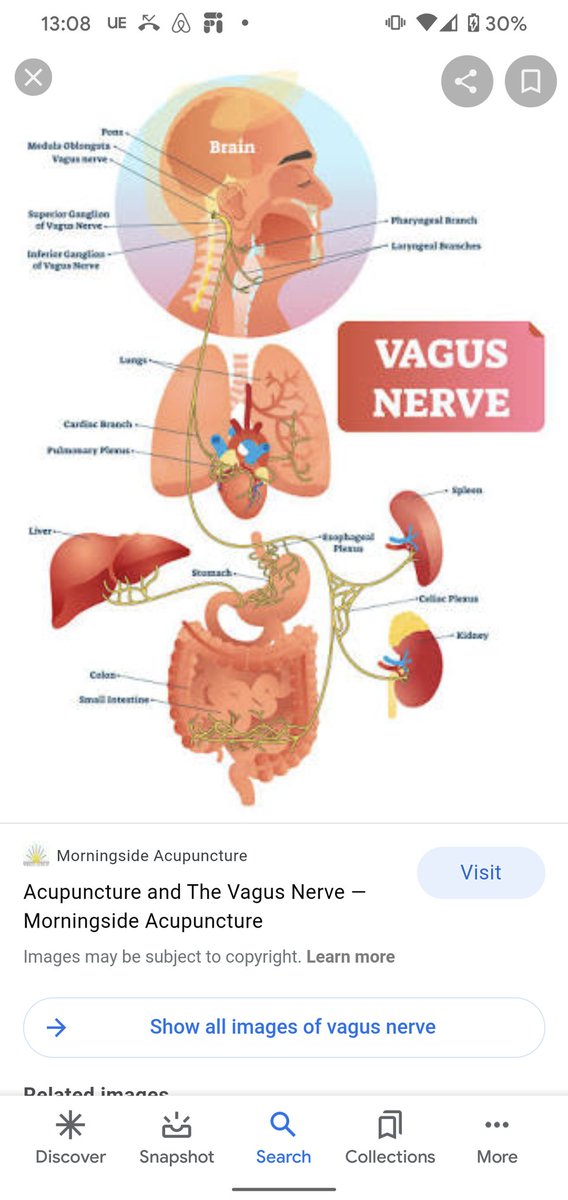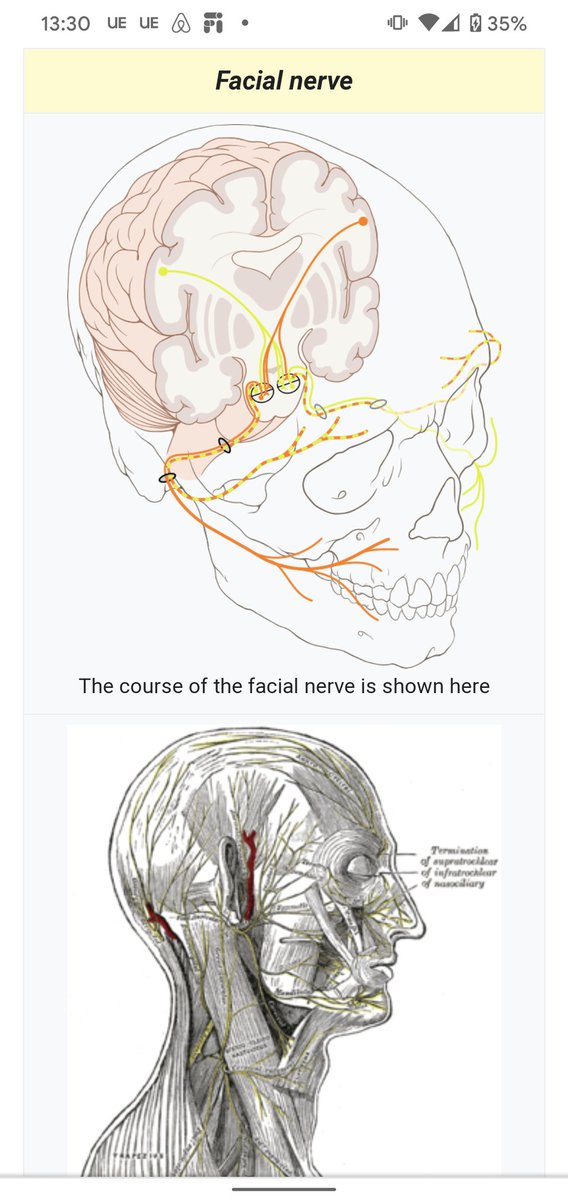
Stewart Alsop III - Host of Crazy Wisdom Podcast
13 Oct,
24 tweets, 7 min read
I currently see that science might not survive its encounter with populism and don't want to contribute to this new normal so will be restarting this #stablethread and will give up the category of "neuroscience" in exchange for "learning"
https://twitter.com/StewartalsopIII/status/1314216449402048522?s=20
In humans, vision is such an important part of our learning apparatus. I've always found it fascinating that the part of our brain that processes vision lies in the back of our brain, not directly near our eyes in the front. 

What is the intersection between imagination and the nervous system?
In researching this question above I found this article above which is fascinating and will break down what I have learned.
ncbi.nlm.nih.gov/pmc/articles/P…
So far they have gone into what imagination is and the difference between it and imagery is.
ncbi.nlm.nih.gov/pmc/articles/P…
So far they have gone into what imagination is and the difference between it and imagery is.
Imagery is seeing images inside the mind which we have had previous experience with and can manipulate in order to do something.
Imagination is a combinatorial process of taking those images and making something novel out of them.
Imagination is a combinatorial process of taking those images and making something novel out of them.
I also learned there are (at least) two types of transmissions between brain networks:
1. Volume Transmission
2. Wiring Transmission.
#2 I believe I'm familiar with and implies a direct neuron to neuron connection. #1 is new to me and want to explain what I believe it is.
1. Volume Transmission
2. Wiring Transmission.
#2 I believe I'm familiar with and implies a direct neuron to neuron connection. #1 is new to me and want to explain what I believe it is.

It seems that Volumic Transmission is when neurotransmitters diffuse into the extracellular matrix (ECM) of the brain itself and then travel to many different neurons that are not directly next to each other. My main question:
What is the advantage of this type of communication?
What is the advantage of this type of communication?

A new term that I learned from this article is prospection or the ability to imagine a future state totally within our imagination. This makes a lot of sense that imagination would have originated from trying to predict future states and something we share with other animals.
This is the main point they make:
Imagination is an exaptation of mirror neurons. In the same way that mirror neurons allow an animal to see another animal do something and also have similar reactions, imagery neurons allow us to that on ourselves via imagination. Fascinating.
Imagination is an exaptation of mirror neurons. In the same way that mirror neurons allow an animal to see another animal do something and also have similar reactions, imagery neurons allow us to that on ourselves via imagination. Fascinating.

Neurotransmitters!
Today I had the question pop up:
Is a neurotransmitter a cell? If not what is the difference between a neurotransmitter and other subcellular units?
Now my attempt to answer that question.
Today I had the question pop up:
Is a neurotransmitter a cell? If not what is the difference between a neurotransmitter and other subcellular units?
Now my attempt to answer that question.

From my research, I do not believe that neurotransmitters are cells.
They are made of amino acids. So neurotransmitters are not cells, but they are made within cells and used to communicate between neurons and groups of neurons across what is called the synaptic cleft.
They are made of amino acids. So neurotransmitters are not cells, but they are made within cells and used to communicate between neurons and groups of neurons across what is called the synaptic cleft.

Neurotransmitters are so important for learning!
You have probably heard of dopamine and serotonin but the other ones?
Right now all of these are interacting in varying degrees to create your current mood! Can you identify, using your imagination, the one that is most active?
You have probably heard of dopamine and serotonin but the other ones?
Right now all of these are interacting in varying degrees to create your current mood! Can you identify, using your imagination, the one that is most active?

What are tegmental neurons and how do they contribute to our learning?
Tegmental neurons are heavily involved with the reward system which is modulated by dopamine, an important neurotransmitter. This gets into pleasure and pain, signals which almost all organisms share.
Tegmental neurons are heavily involved with the reward system which is modulated by dopamine, an important neurotransmitter. This gets into pleasure and pain, signals which almost all organisms share.

Im going to try and show how this is actually based in what we understand about the human nervous system and learning:
https://twitter.com/Nisargadatta_M/status/1316088103694630917?s=19
First:
Although we look at the objects of the world as if they are appearing somehow outside of us, this is just an illusion. Never have you ever witness something wholly outside yourself without perception and the senses changing what you look at. Now we go into specifics.
Although we look at the objects of the world as if they are appearing somehow outside of us, this is just an illusion. Never have you ever witness something wholly outside yourself without perception and the senses changing what you look at. Now we go into specifics.
Find a tree to look at, or just look at the picture.
When you look at a tree during the day, you don't see the tree itself. You see light particles bouncing off the tree and into your eye. Your eye perceives these particles and then through the retina delivers it to the brain.
When you look at a tree during the day, you don't see the tree itself. You see light particles bouncing off the tree and into your eye. Your eye perceives these particles and then through the retina delivers it to the brain.

But I'm just going into the specifics of the way your brain perceives light, not how it takes that partial picture and then creates a whole image of it. Right now notice that their is one field of awareness in your being. You can focus in on one sense but that's within the whole.
So when you look at a tree, its not only your visual system that is being engaged but also your categorization system. You see not this one unique tree, but you see every tree that you've ever seen projected onto this tree. This includes your emotional understanding of trees.
How does the brain's categorization system work?
How does the brain moderate or evaluate the influence of context for decision making or learning in general?
Now to explore dopamine and its relation to learning!
As animals we are attracted to novel stimuli because novel stimuli is what helps us do sexy time, eat that good fruit, and drink some water. Our relationship to novel stimuli is heavily moderated by dopamine
As animals we are attracted to novel stimuli because novel stimuli is what helps us do sexy time, eat that good fruit, and drink some water. Our relationship to novel stimuli is heavily moderated by dopamine

Dopamine is a neurotransmitter when acting upon brain neurons and a hormone everywhere else (please verify the part about hormones).
When we learn something new the brain uses dopamine to say "this is important, here is a fancy reward that feels good".
When we learn something new the brain uses dopamine to say "this is important, here is a fancy reward that feels good".
https://twitter.com/StewartalsopIII/status/1321423529590640645?s=20
But the catch is that it doesn't stop there. After the initial experience of learning something new (think of the first time you had sex, more on that later), the dopamine system codes for anticipation of that same reward. Then it no longer becomes about the act, but anticipation
This is where the expectation of reward comes into how we learn.
When I learn a new dance move and it finally clicks:
Bam a new shot of dopamine. Feels so good.
The next time I'm in a dance and I try to use it in practice something happens and my partner messes up. No shot.
When I learn a new dance move and it finally clicks:
Bam a new shot of dopamine. Feels so good.
The next time I'm in a dance and I try to use it in practice something happens and my partner messes up. No shot.
• • •
Missing some Tweet in this thread? You can try to
force a refresh





